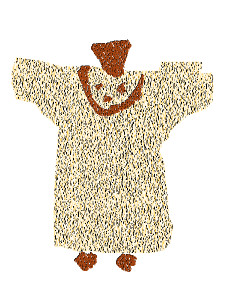 The Desert Andes (the westernmost coastal strip of South America) is very rich in rock art sites. In rare cases specific images occur at selected sites, often separated by long streches of the desert. Two telling examples are the Avian Staff Bearer and the The Enigmatic Traveller (both published in TRACCE). This study examines another “travelling” icon: The Frontal Insignia-Tumi that is found from Tamentica in the south to – surprisingly – Toro Muerto in the north of the Study Area, a distance of no less than 630 km (as the crow flies).
The Desert Andes (the westernmost coastal strip of South America) is very rich in rock art sites. In rare cases specific images occur at selected sites, often separated by long streches of the desert. Two telling examples are the Avian Staff Bearer and the The Enigmatic Traveller (both published in TRACCE). This study examines another “travelling” icon: The Frontal Insignia-Tumi that is found from Tamentica in the south to – surprisingly – Toro Muerto in the north of the Study Area, a distance of no less than 630 km (as the crow flies).
By Maarten van Hoek
*
The Frontal Insignia–Tumi
A Rare High-Status Object in Desert Andes Rock Art
Maarten van Hoek – rockart@home.nl
This paper originally is illustrated with 52 numbered photographs, drawings and maps. About half of those illustrations appears in this on-line issue of TRACCE (click any illustration to enlarge, click again or use the back-arrow to go back), while the complete set of illustrations appears in a PDF that can be downloaded via Academia.
INTRODUCTION
This study focuses on an idiosyncratic ‘tumi-shaped’ object that is – only in rock art iconography – worn by a personage who is sometimes associated with snake-symbolism. This particular object is – surprisingly – very rare in Andean rock art. Remarkably however, the snake-related personages wearing that specific object only occur in the rock art repertoire of Toro Muerto in southern Peru. The object, which is the subject of this study, appears as a conspicuous inverted, T-shaped element above or on the head of only a few anthropomorphic figures in Desert Andes rock art, but – remarkably – it is also found in isolation. Despite its rarity, it has a rather wide distribution. The size of the object varies considerably. It can be very small, but especially some isolated examples are rather large. Despite its small size it is almost certain that this piece is a high-prestige object.
Although the ‘tumi-shaped’ motif that will be discussed in this study invariably has its blade pointing downwards, some ‘tumi’ images may have (had) a different orientation, especially when found on boulders that are disturbed or displaced. The drawings that I made of inverted ‘tumis’ on possibly disturbed rocks or of examples I do not know the orientation of, have all been rotated so that the blade also points downwards. This also goes for collages of isolated inverted ‘tumis’.
Only very few published works deal with or mention this object, which is in some cases labelled as an actual ‘tumi’; the ritual knife used in many ancient Andean societies. However, the subject of this study has a different shape. It displays an inverted T-shape (blade pointing downwards) and is mainly rectilinear compared to the better-known curvilinear ‘tumi’, which is T-shaped (blade pointing upwards) when it is worn on the head. Because of the inverted shape of this object this study focuses on only the southern part of the Desert Andes where it has been reported. And although our Study Area (Figure 1 on page 3) covers the broad coastal strip from Toro Muerto to and inclusive of the rock art sites in the Huatacondo Valley of northern Chile, the focus is on Toro Muerto.
The earliest interpretation of the object that I could trace was published by Eloy Linares Málaga (1999: Fig. 71), who – describing an anthropomorphic petroglyph from Toro Muerto – tentatively labelled the object as a ‘sombrero?’; a ‘hat?’. In fact he described the whole figure as a ‘Motivo[s] antropomorfo[s] con serpientes en los axilas con sombrero[s]’, which reads: ‘an anthropomorphic figure with snakes emerging from the armpits and wearing a hat’. By describing the figure in this way he combined two elements – ‘snake’ and ‘hat’ – in a personage that I have labelled ‘The Lord of the Snakes’ in this study. A photo of this type of anthropomorph was published by Linares Málaga in 1999. Strangely, the extensive inventory of Toro Muerto by Núñez Jiménez (1986) does not include a single example of this type of anthropomorphs, while he definitely did see Boulder TM-Be-028, of which he illustrates Panel A (1986: Fig. 2592), but not Panel B with the two ‘The Lord of the Snakes’ petroglyphs.
In fact, the type of figures that Linares Málaga described, represents the only type in Desert Andes rock art that combines the ‘snake’ and the ‘hat’ element. All other related types feature only the snake-element, or only the ‘tumi’-element (the latter in combination with an anthropomorph or in isolation). To better distinguish the four types of rock art figures in this study I will label them as follows. Type-1: anthropomorphic figure with both a ‘tumi’ on the head and snake-elements from the armpits. Type-2: anthropomorphic figure with only snake-elements from the armpits but without the ‘tumi’. Type-3: anthropomorphic figure featuring only a ‘tumi’, but no snake-elements. Type-4: isolated ‘tumi’ elements. In this study only the Type-1 anthropomorph can with confidence be described as ‘The Lord of the Snakes’, as apparently it wears a high-prestige object (a ‘tumi’?) and simultaneously has ‘snakes’ emerging from the armpits.
*
TYPE-1: ‘The Lord of the Snakes’ – ‘Tumi’ and ‘Snakes’
First all sites with Types 1 to 3 examples will be described from north (Toro Muerto in Peru) to south (Tamentica in Chile), while for specific reasons Type 4 will be described from south to north. After having inventoried the motif, it will be attempted to track down the origin and the meaning of those tumi-shaped objects.
Figure 1: Map of the Study Area (only the rock art sites described in this paper are marked). A: Detail map of The Majes Valley, Peru. B: Detail map of Toro Muerto. Drawings by Maarten van Hoek, based on Google Earth (Google Earth Relief Maps).
THE MAJES VALLEY: Toro Muerto
There are some remarkable facts regarding Type-1 anthropomorphs. First of all, as far as I know this type of anthropomorph only occurs at Toro Muerto. Secondly, Type-1 is extremely rare, even at Toro Muerto. Only four examples – on three boulders – have so far been recorded by me at Toro Muerto. This is an extremely low number, as the whole of Toro Muerto is said to have approximately 5000 decorated boulders (Linares Málaga 1999: 169). I have recorded more than a thousand anthropomorphic figures (mainly ‘dancers’) at this huge site, and thus the four examples of ‘The Lord of the Snakes’ probably represent less than 0.1 % of all anthropomorphic figures that may occur at this site. Thirdly, all three boulders involved are found exceptionally close together. The biggest distance is only 36 metres. Fourthly, most images of interest are found almost in the centre of the enormous petroglyph field that measures no less than 4400 m from NW to SE and 550 m across (Figure 1B). All three boulders are located in the sector that I have labelled TM-Be, where I recorded at least 112 boulders. Sector-Be is situated on average at 695 m O.D., 400 m WNW of the entrance shelter. The area (roughly 200 m by 150 m) measures 30.000 square metres (of the total of about 2.500.000) and its limits are indicated by the altitudes in brown in Figure 2. Because there is still no official inventory or numbering available of this huge site, the three boulders have been labelled TM-Be-023, TM-Be-028 and TM-Be-066 by me.
PDF-only: Figure 2: Map of Sector Be at Toro Muerto. Drawing by Maarten van Hoek, based on Google Earth.
Boulder TM-Be-028. This boulder (located at an altitude 695 m) was probably the first panel with a Type-1 petroglyph to be reported (Linares Málaga 1999). It is a medium-sized boulder decorated on two sides. The slightly sloping and smooth surface of Panel B faces NE and bears six petroglyphs (Figure 3), three match-stick zoomorphs (numbered 3, 4 and 6), a fully pecked disc (numbered 5) and two fully pecked anthropomorphs (numbered 1 and 2). Anthropomorph 1 has two short, horizontally positioned arms without hands, although its left arm is bifurcated at the end. It legs are short and straight without feet. The lower part of the fully pecked, rectangular body seems to have a vertical groove. From each armpit a serpentine groove curls downwards. The fully pecked head is small and oval-shaped. A fully pecked tumi-shaped object – with its ‘handle’ pointing upwards – hovers over the head. Anthropomorph 2 is slightly smaller and the tumi-shaped object is slightly different. Importantly, also his (or her?) tumi-shaped object hovers a short distance over the head.
Figure 3: Panel B of Boulder TM-Be-028 at Toro Muerto. Photograph © by Maarten van Hoek.
Boulder TM-Be-023. About 15 m to the SSE of Boulder TM-Be-028 (see Figure 2) and at 692 m is Boulder TM-Be-023 (Figure 4). Its SW facing and rather steeply sloping surface has some indeterminable grooves near the top and one distinct petroglyph of an anthropomorph that is almost identical to the examples on Boulder TM-Be-028. The whole figure (Figure 5) measures 39 cm from top to toe, while the ‘tumi’ – 16 cm in width and 9.5 cm in height – hovers over the head. The major difference is that this example has no arms. It only has two vertical grooves on both sides of the serpentine grooves, thus ‘enclosing’ the serpentines.
PDF-only: Figure 4: Location of Boulder TM-Be-023 at Toro Muerto (the distance from Boulder 23 to Boulder X is 10 m and to Boulder Y is 110 m). Photograph © by Maarten van Hoek.
Figure 5: Boulder TM-Be-023 at Toro Muerto. Photograph © by Maarten van Hoek.
Boulder TM-Be-066. About 36 m to the WSW of Boulder TM-Be-028 and at 695 m O.D. is Boulder TM-Be-066 (Figure 6). It is a large boulder with a sloping upper surface (Panel A) with some petroglyphs. Panel B is almost vertical and faces SW. On its rather rough surface is only one petroglyph (Figure 7). Near the centre of the panel is an anthropomorphic figure that is almost identical to example 1 on Boulder TM-Be-028. The only difference is that the inverted ‘tumi’ seems to touch the small head, while the ‘tumi’ is not positioned exactly above the axis of the figure, as if the ‘tumi’ was added later.
PDF-only: Figure 6: Boulder TM-Be-066 at Toro Muerto. Circle: Figure 7. Photograph © by Maarten van Hoek.
PDF-only: Figure 7: Close-up of the only petroglyph on Panel B of Boulder TM-Be-066 at Toro Muerto. Photograph © by Maarten van Hoek.
Having discussed all known examples of the ‘Lord of the Snakes’, I now argue that the ‘Lord of the Snakes’ figure is actually a combination of two elements. The first element is the anthropomorph with the snakes. The second element is the alleged ‘tumi’, which is possibly a later addition. There are two types of images that may provide evidence for my hypothesis that the inverted ‘tumi’ actually is secondary; the Type-2 and Type-3 anthropomorphic figures at Toro Muerto.
*
TYPE-2: ‘Snakes-Only’ Anthropomorphs
It is remarkable that – again – Type-2 anthropomorphic figures only occur at Toro Muerto (although anthropomorphic petroglyphs associated with snakes occur at other sites, but those figures are different). And once more, the number of Type-2 figures is extremely low. Only eight examples – on just two boulders – TM-Be-044 and TM-Be-056 – have so far been recorded by me at Toro Muerto, while Núñez Jiménez recorded one other example (1986: Fig. 2313) that I never was able to find. Disregarding this last (ninth) example, all eight figures occur close together, only 57 m apart and again in Sector-Be (see Figure 2).
Boulder TM-Be-044. About 59 m NW of Boulder TM-Be-028 and at 700 m is a very large boulder. Its steeply NE sloping Panel A – not NNW as stated by Núñez Jiménez (1986: 491) – is completely covered with petroglyphs, mainly zoomorphs (camelids). Near the northern end of the boulder is a Type-2 anthropomorph that is incompletely drawn by Núñez Jiménez (1986: Fig. 2624) and as such it is unrecognisable as a Type-2 figure, while a photo by (?) Linares Málaga (2011: 172) clearly shows the Type-2 anthropomorph. It is almost similar to the Type-1 figures. In fact, if one would draw the ‘The Lord of the Snakes’ Figure-1 on Boulder TM-Be-028 without the ‘tumi’, it would indeed be (almost) identical to the figure on Boulder TM-Be-044. The only difference is that its head is outlined, not fully pecked (Figure 8). The dearth of the ‘tumi’ may imply that the Type-2 figure is older and that – only in a few instances – the ‘tumi’ was added later to Type-2 figures. The outlined head and the snake-elements are repeated in figures on Boulder TM-Be-056.
PDF-only: Figure 8: Petroglyph on Boulder TM-Be-044 at Toro Muerto (the distance from Boulder 023 to Boulder X is 10 m and to Boulder Y 110 m). Photograph © by Maarten van Hoek.
Boulder TM-Be-056. Importantly, Boulder TM-Be-056 (at 695 m) is only 17 m NNE of TM-Be-028 (Figures 9 and 10). There are several petroglyphs on this long and smooth, whale-shaped boulder, but our focus is on the east part of the boulder which slopes to the SE (indicated with a yellow circle in Figures 9 and 10).
Figure 9: Location of Boulders TM-Be-023, 028 and 056 at Toro Muerto. Photograph © by Maarten van Hoek.
PDF-only: Figure 10: Location of Boulders TM-Be-028 and 056 at Toro Muerto. Photograph © by Maarten van Hoek.
Boulder TM-Be-056 has a most important group of nine petroglyphs (Figures 11 and 12). An (old?) drawing of those petroglyphs has been published by Linares Málaga (2011: 148). Unfortunately his drawing is completely incorrect and gives the false impression that there are eight Type-2 figures in a group of ten petroglyphs. A photograph by Hans Dieter Disselhoff (Figure 11) gives a much better impression. Moreover, two figures (marked 8 and 9 in Figure 12) are drawn in a completely incorrect position by Linares Málaga. Also, there is no indication of a scale (which differs greatly among the figures) and many details are inaccurate or incorrect.
PDF-only: Figure 11: The petroglyphs on the east part of Boulder TM-Be-056 at Toro Muerto. Drawing by Maarten van Hoek, based on a photograph by Hans Dieter Disselhoff (1968: 33).
Figure 12: The petroglyphs on Boulder TM-Be-056 at Toro Muerto. Photograph © by Maarten van Hoek.
The east part has no less than seven Type-2 anthropomorphic figures (marked 1, 2, 3, 4, 6, 7 and 8 in Figure 12), all with ‘snakes’ emerging from the armpits. Figure-7 is the only example with an outlined head and the only one with feet (I will return to Figure-5, which also has an outlined head). All other features are fully pecked. Exceptional is Figure-9 which has a short, vertical groove from the head that is connected with a fully pecked, ‘tumi-shaped’ object that is positioned with its elongated ‘handle’ pointing downwards (there are only a few comparable anthropomorphic petroglyphs elsewhere at Toro Muerto).
PDF-only: Figure 13: Figures-7 and 4 on Boulder TM-Be-056 at Toro Muerto. Photograph © by Maarten van Hoek.
PDF-only: Figure 14: Figure-9 on Boulder TM-Be-056 at Toro Muerto. Photograph © by Maarten van Hoek.
I already mentioned a different group of anthropomorphic images that are snake-related. Especially at Miculla, 315 km to the SE of Toro Muerto (see Figure 1), are several anthropomorphic petroglyphs that hold a snake-like groove in each hand (Figure 15-A), but those figures are different. There is only one (?) petroglyph at Miculla that seems to have snakes instead of arms (Figure 15-B), but also this figure is different to ‘The Lord of the Snakes’, also because it lacks the ‘tumi’.
PDF-only: Figure 15: A and B: Petroglyphs at Miculla. Photographs © by Maarten van Hoek. C: Petroglyphs on a boulder at Calaunsa, Chile. Drawing (rotated) by Maarten van Hoek, based on a photograph by Renata Aguirre Bianchi.
About 400 km to the SE of Toro Muerto is the rock art site of Calaunsa in northern Chile. At least one boulder, CAL-087, has two anthropomorphic figures with snake-like arms (Figure 15-C). Although none of the examples at Miculla and Calaunsa is in any way associated with a ‘tumi-shaped’ object, the symbolism of the snake-associated personage may have diffused from this area to Toro Muerto, possibly in first instance without the ‘tumi-shaped’ object.
TYPE-3: ‘Tumi-Only’ Anthropomorphs
Type-3 images, anthropomorphic figures that have no snakes but that are directly associated with a ‘tumi-shaped’ object, are even rarer at Toro Muerto. Only three examples – on three boulders – are known to me at this site. Still, at least one example (on TM-Bg-027) seems to confirm that the ‘tumi-shaped’ object is a later addition.
Boulder TM-Bg-003. About 330 m north of Boulder TM-Be-028 is Sector-Bg (see Figure 1B) that is dominated by a very large boulder, TM-Bg-003, which is decorated on several sides. On SSE facing Panel B of Boulder TM-Bg-003 is a match-stick anthropomorphic petroglyph with raised arms and a ‘tumi-shaped’ object hovering over the very small head (Figure 16). Interestingly, the ‘blade’ is partially outlined, partially pecked in. The object may be unfinished (there are several interesting unfinished images at Toro Muerto), but simultaneously it may be an (unfinished?) later addition.
PDF-only: Figure 16: Petroglyph on Panel B of Boulder TM-Bg-003 at Toro Muerto. Photograph © by Maarten van Hoek.
Boulder TM-Bg-027. Only four meters to the SW of Boulder TM-Bg-003 is Boulder TM-Bg-027. On its SW sloping, almost vertical surface is an idiosyncratic image of a fully frontally depicted anthropomorphic figure with a large rayed head (Figure 16). Although it has a serpentine groove inside its rectangular, outlined body, I do not regard this figure to be a Type-1 anthropomorph (several biomorphic figures at Toro Muerto have a serpentine groove inside their body), but still the figure may well be snake-associated. Yet it is of great importance for another reason. It is remarkable that it facial features have been superimposed (?) by a large ‘tumi-shaped’ object, leaving only its left eye exposed (Figure 18). Although there is no actual proof, it is very likely that this object was superimposed onto the face at a later date, obliterating the other facial features.
Figure 17: Petroglyph on Boulder TM-Bg-027 at Toro Muerto. Photograph © by Maarten van Hoek.
PDF-only: Figure 18: Petroglyph on Boulder TM-Bg-027 at Toro Muerto. Photograph © by Maarten van Hoek.
Boulder TM-Be-105. At Toro Muerto there possibly is a third petroglyph of a Type-3 anthropomorph. It again is found in Sector-Be. On Boulder TM-Be-105 is an anthropomorphic petroglyph with apparently two pairs of arms. Its head seems to have been replaced (superimposed?) by a ‘tumi-shaped’ feature (Figure 19).
PDF-only: Figure 19: Petroglyph on Boulder TM-Bg-105 at Toro Muerto. Photograph © by Maarten van Hoek.
Anthropomorphic figures with a ‘tumi-shaped’ object on or hovering over the head occur further SE in the Study Area, but are – again – exceptionally rare. An interesting petroglyph has been recorded just SE of the city of Arequipa at the petroglyph site of Pillo in the Yarabamba Valley. However, in my opinion this figure has incorrectly been interpreted by Augusto Cardona Rosas in his 2012-publication.
THE YARABAMBA VALLEY: Pillo
Between the mountains of Cerro Llorón and Cerro Pajonal, is the plain of Pampa de Pajonal, which is cut by the Río Yarabamba. At 2370 m is the petroglyph site of Pillo (or Pillu) with only two petroglyph boulders. The images on the larger boulder have extensively described by Cardona Rosas (2012), who refers to the image on the stone as ‘El Sr. De Las Culebras’, which reads ‘The Lord of the Snakes’. Conversely, this petroglyph is not a Type-1 anthropomorphic figure, as it has no snakes emerging from the arm pits; it is only surrounded by serpentine grooves that not necessarily are or symbolise snakes (Figure 20). It is not even interpreted as a ‘tumi-bearer’ by Cardona Rosas. However, having scanned his photographs I rather interpret the anthropomorph as a true Type-3 figure, which, moreover, has a specific property in common with two ‘tumi-bearer’ petroglyphs recorded much further SE.
Figure 20: Petroglyph on a boulder at Pillo. Drawing by Maarten van Hoek, based on a photograph by Cardona Rosas (2012).
Cardona Rosas interprets the uppermost part of the anthropomorphic figure as a head wearing a ‘tocado de diseño en forma de cruz’; a ‘headgear in the form of a cross’ (1 in Figure 21). He moreover argues that the head has ‘orejas sobre dimensionadas o de gran tamaño’; in short this reads ‘exceptionally big ears’ (2 in Figure 21). His interpretation is of course quite logical and I cannot prove that it is an incorrect reading. However, I prefer to interpret the head area as a rectilinear, inverted ‘tumi’ that is connected with a short groove to a second, smaller ‘tumi’ (respectively A and B Figure 21). I base my interpretation not only on the shape of the elements involved, but also on two similar ‘tumi-bearer’ petroglyphs that have been recorded in Chile. If indeed my interpretation is correct, the hypotheses put forward by Cardona Rosas (2012) need to be reviewed.
PDF-only: Figure 21: Detail of the head of the petroglyph at Pillo. 1 and 2: The interpretation by Cardona Rosas. A and B: my interpretation. Drawings © by Maarten van Hoek, based on a photograph by Cardona Rosas (2012).
Further SE in the Study Area I know of only eight examples, all of which are found in the Atacama Desert of northern Chile. Interestingly, this part of the Atacama houses a relatively large concentration of Type-4 ‘tumis’ (isolated elements), while at least one panel, in the Azapa Valley, has a combination of Type-4 elements and one Type-3 anthropomorph.
THE AZAPA VALLEY: Paradero
Scattered along the banks of the upper part of the Azapa Valley, locally also called the Lilvicar Valley, are at least five rock art sites (Az-47, 48, 49, 54 and 56). Unfortunately the sites in this part of the valley often have confusing names. For instance, a boulder at the site of Ausipar (Az-48) – important in this study – is also referred to as Virgen de las Peñas and Chilpe (Az-49). Two sites are of relevance in this study. At Ausipar (Az-48) at least seven boulders with petroglyphs have been recorded, two of which (numbered Az-48/1 and Az-48/2 by me) are of interest here. At nearby Paradero (1300 m to the west of Ausipar) one boulder (Az-47/1) is of relevance. I will start with Paradero and will discuss Ausipar further on.
Boulder Az-47/1. This most interesting panel on Boulder Az-47/1 (the official site number is Az-49; the addition /1 is mine) is found at the Paradero archaeological site (at 1230 m O.D., 20 m above the valley floor) on the north bank of the Azapa Valley. The panel has a number of petroglyphs. The almost completely fully pecked anthropomorph is about 40 cm in height and has drooping arms in the same way as several Type-2 figures, but without any snakes. Attached to its outlined head is a relatively large inverted ‘tumi’ of about 16 cm in width (A in Figure 22). A short groove runs upwards from the ‘tumi’ and connects the first ‘tumi’ to a second, slightly larger ‘tumi’ of about 17 cm in height (B in Figure 22). As Element B definitely is not an Andean Cross, especially this petroglyph confirms that the ‘El Sr. De Las Culebras’ petroglyph at Pillo (see Figures 20 and 21) is in fact a Type-3 anthropomorph. Five isolated Type-4 ‘tumis’ encircle the anthropomorph, while to two other motifs (1 and 2 in Figure 22) will be discussed further on.
Figure 22: Petroglyph on Boulder Az-47/1 at Paradero. Drawing by Maarten van Hoek, based on an unnumbered photograph in Valenzuela et al. (2014).
THE CODPA VALLEY: Ofragía
South of the Azapa Valley is the valley of the Río Codpa (also called Vítor or Chaca) with several rock art sites. There is a very large and important group of rock art sites at and near Ofragía (labelled Ofragía-1 and 2, and Cerro Blanco-1, 2, 3 and 4). An official inventory of this concentration is available now (CIHDE 2012). The descriptions of the relevant petroglyphs at Ofragía are based on my on-site surveys and on the inventory (CIHDE 2012). Also, I will follow the official numbering of the published inventory.
The biggest group of petroglyph panels is found at Ofragía-1 (Ofa-1), located on the south slope of the valley, where at least four panels bear images that are of interest here. These will be discussed from west to east. Although there are no Type-1 anthropomorphic figures at Ofragía-1, Boulder Ofa-1-B37-P2 has a petroglyph of an anthropomorph with serpentine groove emerging from its left arm.
Panel Ofa-1-B2-P1. At the west end of Ofragía-1 is a prominent outcrop-boulder group (at 1759 m and about 12 meters above the valley floor, which is at 1747 m). The spot offers a wide view of the Codpa Valley to the east (Figure 23). Apart from (large) camelids and incised grids, the north facing Panel Ofa-1-B2-P1 (at 1757 m) is better known for its large concentration of petroglyphs depicting ‘warriors’ with bow-and-arrow or with ‘axes’ (or ‘clubs’?). Those figures typically have flexed legs and often a large ‘plume’ from the head. On of those ‘axe-men’ however seems to wear a ‘tumi-shaped’ ‘hat’ (Figure 24). Its left (?) arm seems to raise an ‘axe’ or ‘club’. On the same panel may be an isolated, inverted ‘tumi’ (blade pointing downwards).
Figure 23: View from near Panel Ofa-1-B2-P1 at Ofragía, looking east across the Codpa Valley, Chile. Photograph © by Maarten van Hoek.
PDF-only: Figure 24: Petroglyphs on Panel Ofa-1-B2-P1 at Ofragía. Photograph © by Maarten van Hoek.
Panel Ofa-1-B9-P1. Part of the same large, much fragmented outcrop and only a few meters higher up is Boulder Ofa-1-B9. On almost vertical, west facing Panel 1 is a large collection of zoomorphic petroglyphs (mainly camelids), some groups of scratched lines and at least one anthropomorph that (only seemingly?) ‘stands’ on the back of a camelid (Figure 25). This anthropomorph has drooping arms. Its right arm ends in a much larger hand with possibly six fingers. The sixth ‘finger’ possibly is an extra line that is connected to a straight, hooked object (a weapon?). The upper arms of the figure each have a row of four short grooves, like feathers of a wing. On its circular head it is wearing an inverted ‘tumi’. Interestingly, this ‘tumi-shaped’ object is interpreted by Álvaro Romero et al. (2004: Fig. 4) as a ‘tocado similar a un sombrero occidental’, a ‘headgear similar to an occidental hat’, but in view of the evidence presented in this study I regard their interpretation to be incorrect.
Figure 25: Petroglyphs on Panel Ofa-1-B9-P1 at Ofragía (the arrow points at a possible bird-track petroglyph apparently damaged recently). Photograph and drawing © by Maarten van Hoek.
Panel Ofa-1-B9-P2. On the heavily vandalised Panel 2 of the same boulder is a group of (zoomorphic) petroglyphs and at least one indistinct and irregular anthropomorphic figure with a ‘tumi-shaped’ object on its indistinct head (Figure 26).
PDF-only: Figure 26: Petroglyph on Panel Ofa-1-B9-P2 at Ofragía. Drawing © by Maarten van Hoek, based on a photograph kindly supplied by archaeologist Daniela Valenzuela, Arica, Chile.
Panel Ofa-1-B32-P1. About 80 m east of Panel Ofa-1-B9-P1 and on a very steep north facing slope is a large boulder at about 1772 m. It is located a short distance uphill and SSE of Panel Ofa-1-B44 (Figure 27), which is exceptional for having petroglyphs, rock paintings and painted-in petroglyphs. There are several petroglyphs on the much sloping surface of Panel Ofa-1-B32-P1, including one large image of an archer with an extremely long arm-arrow combination and a relatively small bow (which is typical for the area). The head seems to have been replaced by a ‘floating’ ‘tumi’, while a second, smaller ‘tumi’ is hovering over the larger one (Figure 28). Compare this configuration with Petroglyphs A and B on Boulder Az-47/1 (Figure 22) and with the anthropomorphic petroglyph at Pillo see (Figures 20 and 21).
Figure 27: View of Panels Ofa-1-B44 and Panel Ofa-1-B32-P1 at Ofragía, looking south. Photograph © by Maarten van Hoek.
Figure 28: Petroglyphs on Panel Ofa-1-B32-P1 at Ofragía. Drawing © by Maarten van Hoek.
THE CAMARONES DRAINAGE: Taltape
There are several rock art sites in the Camarones drainage; one of them is Taltape. Although Taltape has intensively been surveyed by Hans Niemeyer (1969), his survey did not include a ‘tumi-bearer’. However, a paper by Marvin Alleson et al. included a photograph of a petroglyph from Taltape showing a fully pecked, frontally depicted anthropomorph wearing a large, inverted ‘tumi’-shaped object (Figure 29). Unfortunately the photo was rather vague, so it may be possible that the ‘tumi’ was added later.
PDF-only: Figure 29: Petroglyph on a boulder at Taltape. Drawing by Maarten van Hoek, based on a photograph in Alleson et al. (1982: Figura 1).
Suca
Further east and south in the Camarones drainage are several rock art sites, especially in the Suca Valley, where no less than 16 petroglyph sites have been recorded by a team from the University of Tarapacá, Arica, Chile. Unfortunately, all the data of the 2001-2003 Suca Survey were lost because of a hard disc crash, while none of the members of the survey had a back-up (Marcela Sepúlveda 2016: pers. comm.). For that reason I cannot offer the exact locations of the petroglyph boulders nor their panel numbers.
In the Suca Valley are altogether five panels with petroglyphs that are of relevance in this study, but, except for one possible Type-3 petroglyph and one deviant type of ‘tumi-bearer’, those examples concern Type-4 images (discussed later). The Type-3 petroglyph concerns an (almost?) fully pecked and fully frontally depicted anthropomorphic figure that has a possible inverted ‘tumi’ on its head (Figure 30). On the same panel are also two simple single-line petroglyphs (one doubtful example within the enormous circular head of a large anthropomorph) that are possibly related to the curvilinear ‘tumi’ (indicated with yellow arrows in Figure 30).
Figure 30: Petroglyph on a boulder at Suca. Drawing by Maarten van Hoek, based on a photograph by Rolando Ajata.
The petroglyph of the deviant type of ‘tumi-bearer’ – reported at Suca-12 – involves a simple, frontally depicted anthropomorphic figure, apparently without a head and instead of a head apparently a double ‘tumi’ (in fact two joined, curvilinear ‘tumis’) has been drawn (Figure 31). Isolated petroglyphs of two joined ‘tumis’ have for instance been reported at Quebrada de San Juan in northern Peru (Van Hoek 2011: 58 – 60), at Chele-1 (Panel D) and at San Isidro (Panel C), both in the Huatacondo Valley in northern Chile, and at a few sites in western Argentina (for instance at Sapagua).
PDF-only: Figure 31: Petroglyph on a boulder at Suca-12. Drawing by Maarten van Hoek, based on a photograph by Briones and Mondaca (2004: Figura 5e).
THE HUATACONDO VALLEY – Tamentica
Finally I have to mention a small petroglyph on the steeply west sloping surface of Bloque 25 at Tamentica-1 (an important rock art site marking the extreme south end of the Study Area). A fully pecked, frontally depicted anthropomorphic figure seems to have a (less deeply patinated) head in the shape of the inverted ‘tumi’ (Figure 32). This possible ‘tumi’ may represent an alteration to an existing figure or an instance of re-pecking.
PDF-only: Figure 32: Petroglyphs on Bloque 25 at Tamentica (inset: detail). Photograph © by Maarten van Hoek.
TYPE-4: Isolated ‘Tumis’
There are several rock art sites where petroglyphs of isolated ‘tumis’ have been reported (as well as at some geoglyph sites within the Study Area, for instance a short distance west of Tamentica). However, also outside the Study Area examples of isolated ‘tumis’ occur. For instance, at least one rock panel at Negruyoq in the Cordillera de Vilcabamba, Cusco, has two rock paintings that could depict the ‘tumi’ symbol. They both have the ‘blades’ pointing downwards and for that reason the motifs have been interpreted also by Rainer Hostnig as possible ‘tumis’ (2008: Fig. 51). At Cochineros, north of the Study Area are many petroglyphs of isolated ‘tumis’, but, although most have their blades pointing downwards, their orientation sometimes varies considerably. Some of those ‘tumis’ (Figure 33) seem to have been anthropomorphised (showing two ‘eyes’?) and at least one anthropomorph is holding a ‘tumi’ in its hand. The isolated ‘tumis’ in the Study Area will be discussed from south to north, starting at Tamentica and ultimately revisiting our initial starting point, Toro Muerto.
PDF-only: Figure 33: Petroglyph at Cochineros, Valle de Mala, Peru. Drawing by Maarten van Hoek.
*
THE HUATACONDO VALLEY: Tamentica
In most cases the blade of the isolated, inverted ‘tumi’ in the Study Area is pointing downwards, like the inverted, rectilinear ‘tumi’ on the heads of the Type-1 and Type-3 figures that I already discussed. However, I know of two isolated ‘tumi’ petroglyphs that have been drawn in a different position, as in those two cases the – curvilinear! – blades are pointing upwards (downward pointing curvilinear motifs will be described as a ‘tridents’ further on in this study). Those two ‘tumis’ (Figure 34) are found on a fortunately undisturbed rock panel (Bloque 7- Panel C) at the shamefully damaged and vandalised rock art site of Tamentica-1, Chile. Also at Tamentica are at least two petroglyphs of anthropomorphs that apparently are wearing a curvilinear ‘tumi’ on the head (blades pointing upwards).
PDF-only: Figure 34: Petroglyphs on Bloque 7 – Panel C at Tamentica. Photograph © by Maarten van Hoek.
*
THE TARAPACÁ VALLEY: Pachica
Although at the major rock art site (Tarapacá-47) and at the other – minor – rock art sites in the Tarapacá Valley no factual (inverted) isolated ‘tumi’ petroglyphs have been recorded, it is worthwhile to report that there is an important exception. At the impressive petroglyph site of Pachica, located in a small side-valley, is at least one isolated example of the inverted (rectangular) ‘tumi’ (Figure 35-1). It has its fully pecked blade pointing downwards. Moreover, some ‘tumi-shaped or double-‘tumi’ elements at this site are found on top of rectangular pedestals or double-stepped motifs; as if the ‘tumis’ are placed on top of mountain-symbols (Figure 35-2, 3 and 5).
Figure 35: Petroglyphs from the main panel at Pachica, Tarapacá, Chile. The drawings 2 to 5 have different scales and have been rotated. Drawings © by Maarten van Hoek based on a photograph by recorriendotarapaca.cl/ Aventura Tarapacá.
In one case a ‘tumi’ motif at Pachica seems to have been anthropomorphised by adding legs to the symbol. Also several biomorphs on the enormous outcrop panel seem to have a ‘tumi’ on the head or have a ‘tumi-shaped’ head. In all cases the curvilinear ‘tumis’ at this site have the blades pointing upwards, except for an isolated possible double-‘tumi’ petroglyph that has two curvilinear blades that are pointing up and down (Figure 35-4). It is remarkable that the only publication about this sacred site that I have available (Brant 2008) does not mention any of the ‘tumi’ petroglyphs.
*
THE AROMA VALLEY: Ariquilda
North of the Tarapacá Valley is the Quebrada de Aroma. On Panel ARQn-083 at Ariquilda is a petroglyph of a fully pecked camelid with an outlined figure of an inverted ‘tumi’ on its back (the ‘blade’ attached to the animal’s back). This addition may represent a cargo, but the shape of the ‘cargo’ is unusual and may be ‘tumi’ related. On Panel ARQx-221 is a petroglyph of a possible isolated rectangular ‘tumi’ with the blade pointing downwards.
Figure 36: Petroglyphs at Panel ARQn-078 at Ariquilda. Photograph © by Coen Wubbels. Inset: Possible ‘tumi’ on Panel ARQx-221 at Ariquilda. Drawing © by Maarten van Hoek, based on a photo by Daniel Elías.
*
THE CAMARONES DRAINAGE: Suca
Returning to the group of rock art sites in the Quebrada de Suca, NW of Ariquilda, at least three panels bear isolated ‘tumis’. At the site of Suca-6 is a boulder with a large petroglyph of a circle below which are at least three isolated ‘tumis’ (A, B and C in Figure 37). In this collage they are not drawn in their relative correct positions, but in reality they all have the blade pointing downwards. Another site at Suca (site number not stated by Rolando Ajata) has a boulder on which two isolated ‘tumis’ have been fully pecked out, again with their blades pointing downwards (Figure 37D). Still another panel in the Suca Valley (site number not stated by Rolando Ajata) has four (perhaps six) isolated inverted ‘tumis’ that all seem to have been superimposed upon earlier images, including a large anthropomorph. Again, all blades are pointing downwards (Figure 38).
Figure 37: Petroglyphs on two boulders at Suca. A to C (black): three ‘tumis’ on a boulder from Suca-6 (to scale; relative positions incorrect). D (brown): two ‘tumis’ on a boulder in the Suca Valley. Drawings by Maarten van Hoek, based on photographs by Rolanda Ajata.
PDF-only: Figure 38: Petroglyphs on a boulder at Suca. Drawing by Maarten van Hoek, based on a photograph by Rolanda Ajata.
Angostura de Chiza
Further NW the Suca Valley joins the Quebrada de Miñimiñi. At that point are at least three geoglyph sites and, about 3 km NE of the confluence, an important petroglyph site called Angostura de Chiza. Unfortunately, this site has not yet been inventoried. However one large boulder at this site, labelled Boulder CHZ-001 by me, has many petroglyphs that are fully described by me. Petroglyph 14 on Boulder CHZ-001 (Van Hoek 2014b: Fig. 3) is a fully pecked motif that has been interpreted by me earlier as a stepped figure. However, I now am more inclined to think that it represents an example of the inverted ‘tumi’.
THE CODPA VALLEY: Ofragía
Panel Ofa-1-B2-P1. This panel, better known for its large concentration of petroglyphs depicting ‘warriors’, has an ‘axe-men’ petroglyph that seems to wear a ‘tumi-shaped’ ‘hat’ (see Figure 24). On the same panel may be an isolated, inverted ‘tumi’ (blade pointing downwards).
Panels Ofa-1-B4.1-P3 and P4. Very near and only a little lower than Boulder Ofa-1-B9 (discussed above) is Boulder Ofa-1-B4.1 with several panels with petroglyphs. On Panel P3 is a large ‘tumi-shaped’ petroglyph. However, the blade is narrow and – more importantly – curvilinear, while the handle is broad and tapering. The motif looks more like a stylised bird. Confusingly, the official inventory (CIHDE 2012) classifies this motif as a ‘tridente’, while a similar (larger) motif on adjacent Panel P4 is labelled as a ‘tumi’.
Figure 39: Petroglyphs on Boulder Ofa-1-B4.1 at Ofragía. Photograph © by Maarten van Hoek.
Also Boulder Ofa-1-B4.6-P1 is said to bear such a ‘tridente’, while Boulder Ofa-1-B53.1-P3 is said to bear a ‘tumi’, which proved to be an outlined object (‘tumi’?) or perhaps an unfinished anthropomorph. To confuse things even more the Plan de Manejo writes that – at Ofragía-1 – there are ‘tres casos de representaciones de tumis o cuchillos ceremoniales (CODECITE 2012: 62) y 7 tridentes (CODECITE 2012: Tabla 27), but the inventory (CIHDE 2012) does not clarify which is which. Also the photos of the rather incomplete inventory are often too small to offer a solution and also the descriptive (single-line!) texts (Observaciones) lack many (much relevant) details.
From now on two types of ‘tumi-shaped’ motifs will be discussed: the inverted ‘tumi’ (with a rectilinear blade) and the design with a curvilinear blade, which – for matters of convenience – will be called a ‘trident’. The focus however is still on the inverted, rectilinear ‘tumi’.
THE AZAPA VALLEY: Chilpe
Already discussed is Boulder Az-47/1 at Paradero in the Azapa Valley. It features a Type-3 anthropomorph. But on the same panel are five isolated ‘tumis’ (C, D, E, F and G in Figure 22) as well as two designs that seem to be more related to the ‘trident’ (1 and 2 in Figure 22).
A short distance further east in the same valley – at Chilpe (also referred to as Las Peñas) – are two boulders (labelled Az-48/1 and Az-48/2 by me) with petroglyphs that are relevant in this study. The smaller boulder (Az-48/1) has two ‘tumi’ petroglyphs (A and B in Figure 40) as well as two ‘trident’ petroglyphs (petroglyphs 1 and 2). The much larger boulder (Az-48/2) has on its north facing panels a large collection of petroglyphs, several of which (possibly up to 15) are either ‘tumis’ or ‘tridents’. Some of those images have been illustrated in the collage of Figure 40 (petroglyphs 3 to 7: relative positions incorrect; different scales).
Figure 40: Petroglyphs on two boulders at Chilpe (Az-48/1 and Az-48/2). Drawings by Maarten van Hoek, based on photographs by Renato Aguirre Bianchi.
THE LLUTA VALLEY: Cruce de Molinos
Just north of the Azapa Valley, in the extreme north of Chile, is the Lluta Valley. Especially its lower course is well known for its many geoglyph sites. The most westerly petroglyph site in Lluta, Rosario (Sitio LL-35), has at least one panel (Panel 3, marked green in Figure 41) with seven examples of the ‘trident’ (Figure 41: photo), the largest of which may even depict a (squatting) anthropomorph (Figure 41: drawing). Images of the inverted ‘tumi’ are unknown to me to exist at Rosario.
Figure 41: Map of the rock art site of Rosario; map based on Google Earth. Insets: petroglyphs from Panel 3. Drawings and photograph by Maarten van Hoek.
In her study of the Lluta Valley archaeologist Daniela Valenzuela states that the ‘tumi-shaped’ image is common at various rock art sites in the area (2013: 95) and – importantly – she adds that the ‘tumi’ is a high-prestige object (2013: 96). Unfortunately she does not mention those ‘varios sitios de arte rupestre de la región’. For instance, the rock painting of a ‘trident’ motif on Panel IV at Sora Este, further east in the Lluta Valley, is not mentioned.
Some 21 km upstream from Rosario and still in the Lluta Valley is the petroglyph site of Cruses de Molinos (LL-43), which has extensively been studied by Valenzuela (2013). She reported at least eight ‘tumi-shaped’ petroglyphs (which is 4% of the imagery at LL-43) (Valenzuela 2013: 84; Fig. 5.10). Because of the very steep slope at Cruses de Molinos several boulders have been displaced or have tumbled down the slope and do no longer have the blade perfectly pointing downwards. One boulder with an undoubtedly disturbed character is found at the bottom of the slope and resting against the edge of the hamlet of Molinos (Figure 42). Valenzuela illustrates most ‘tumis’ with the blade pointing downwards (Figure 43), but their factual orientation is not confirmed in her study.
Figure 42: Petroglyph on a boulder at the edge of the hamlet of Molinos. Photograph © by Maarten van Hoek.
PDF-only: Figure 43: Two of the eight ‘tumi’ petroglyphs at Cruces de Molinos (different scales; different boulders). Drawings by Maarten van Hoek, based on drawings by Daniela Valenzuela (2013).
Interestingly, the ‘tumi’ petroglyphs of Cruses de Molinos are relatively very large. For example the ‘tumi’ on Panel 2 of Boulder LL-43-B12 measures roughly 28 cm (across the ‘blade’) by 29 cm in height. Thus it is larger than the petroglyphs of the anthropomorphs and zoomorphs on this panel. On the same panel is a (possible!) ‘tumi-shaped’ petroglyph that is not fully pecked like all other examples at this site. Instead it is filled with a grid pattern and it has another orientation relative to the fully pecked example (Figure 44).
PDF-only: Figure 44: Petroglyph on Boulder LL-43-B12 at Cruces de Molinos. Drawing by Maarten van Hoek, based on a drawing by Daniela Valenzuela (2013).
Also Valenzuela distinguishes between ‘tumis’ and ‘tridents’. Regarding the seven ‘tridents’ that she recorded at Cruses de Molinos, she remarks that this motif occurs regularly in this area (northern Chile and southern Peru). Moreover she mentions that the motif is sometimes interpreted as a ‘bird in flight’, but also that different types of the design reminds one of the ‘tumi’ or even of bird-tracks (2013: 215). A similar bird-interpretation has been suggested by Augusta Cardona Rosas (2002: 158) for petroglyphs in southern Peru. However, I have some reservations regarding the bird-interpretation, as in almost every case the ‘tail’ (the ‘handle’) of the purported bird (knife) is pointing upwards. This rather strictly applied orientation – noticed at almost every site that this study describes – may point to a different symbolism.
THE PALPA VALLEY: Miculla
Further north, across the border with Peru, is the very extensive petroglyph site of Miculla. It is remarkable that so far only one petroglyph – on Boulder MIM-081 – of a (possible) ‘tumi’ has been reported. It moreover is rather small (7 cm by 9.5 cm across the blade) and has the blade pointing upwards (Figure 45-inset). Another petroglyph at Miculla may depict an anthropomorph with a ‘tumi-shaped’ head.
Figure 45: Part of a rock panel at Anajiri. Drawing by Maarten van Hoek, based on a photograph by David Rendon. Inset: Petroglyph on Boulder MIM-081 at Miculla. Drawing © by Maarten van Hoek.
About 40 km to the north of Miculla is the petroglyph site of Anajiri. One large panel has numerous images, including (from left to right) one curvilinear ‘trident’, one rectilinear ‘trident’ and one fully pecked, inverted ‘tumi’ with a rectilinear blade and a curvilinear handle (Figure 45). Another large rock panel at Anajiri may have a faint ‘trident’ petroglyph with the blade pointing upwards.
THE LOCUMBA VALLEY: San Antonio
The rock art site of San Antonio in the Locumba Valley of southern Peru proves to have many boulders with ‘trident’ and possible ‘tumi’ petroglyphs. A petroglyph similar to the possible ‘tumi’ at Miculla occurs on Boulder SAL-002. It also has the blade pointing upwards. On Boulder SAL-012 is a row of possibly four petroglyphs of ‘tridents’, all having the blades pointing in the same direction. On Boulder SAL-017 are at least three ‘tridents’ with blades pointing downwards. Boulder SAL-023 has two ‘tridents’ with blades pointing upwards. Boulder SAL-024 may have two double-‘tumis’, both vertically orientated. Boulder SAL-027 has two possible ‘trident’ petroglyphs. Boulder SAL-037 has one possible ‘tumi’ (blade upwards pointing) and two ‘trident’ petroglyphs with the blades pointing downwards. Boulder SAL-048 has four ‘trident’ petroglyphs with their blades pointing downwards. Boulder SAL-059 has a possible anthropomorphic figure without arms and instead of a head a possible rectilinear, inverted ‘tumi’ hovers over the body. This petroglyph is much weathered, though. Boulder SAL-0637 has three possible ‘tumi’ petroglyphs.
Ite
About 37 km further downstream and only three kilometres inland is the rock art site of Ite, overlooking the Río Locumba (locally called the Río Ite). On a boulder that is decorated on four sides are two almost vertical panels (positioned like a V) that both face the Pacific Ocean. Those two panels bear numerous, much weathered images, including four ‘tridents’ on the west panel, while exactly on the apex of the V (and thus placed on the two panels) is a vertical row of at least six ‘tridents’. All images have their blades pointing downwards, while some examples seem to be more rectilinear than curvilinear.
THE SOGAY AREA
Importantly, no isolated examples of the inverted, rectilinear ‘tumi’ are known to me to have been reported NW of the Río Locumba, but the recording of the petroglyph of the anthropomorphic figure with two inverted ‘tumis’ at Pillo is most significant (see Figures 20 and 21). In a large area to the SE of the city of Arequipa are several rock other art sites that have one or more petroglyphs of the ‘trident’; all with the blade roughly pointing downwards. Especially at the rock art concentrations at Gayalopo and San Antonio, only 5 to 10 km SE from Pillo, several boulders with ‘tridents’ (Figure 46) have been reported (Begazo Quenaya n.d.). Some of them have been drawn in outline only (Cardona Rosas 2002: 158). It may be interesting to note that similar designs (again all with the blade pointing downwards) also occur on ceramics found near San Juan in the valley of the Río Tambo, south of San Antonio (Linares Málaga 2004: 96; see also 84).
Figure 46: Petroglyphs on a boulder at San Antonio (there may be more ‘trident’ motifs on this boulder). Photograph © by Maarten van Hoek.
THE MAJES VALLEY: Toro Muerto
Finally we return to Toro Muerto in the Majes Valley. Again, as far as I know, no isolated petroglyphs of the inverted ‘tumi’ or the ‘trident’ have been reported in this huge site or anywhere else in the Majes Valley. Yet there is one boulder at Toro Muerto that may be of interest. In the north part of the boulder field is Boulder TM-Aa-017. It has a petroglyph that seems to comprise a vertically arranged row of four stacked and connected ‘tumis’ (Figure 47); as far as I know the only arrangement of this kind in the Study Area.
Figure 47: Petroglyphs on a boulder at Toro Muerto. Photograph © by Maarten van Hoek.
Addendum – July 2017: Although I wrote in the original version of this paper (2016) that “no isolated petroglyphs of the inverted ‘tumi’ or the ‘trident’ have been reported in this huge site (Toro Muerto) or anywhere else in the Majes Valley“, this proved to be incorrect. At the rock art site of La Laja in the Majes Valley – north of Toro Muerto – at least one small petroglyph of a ‘tumi’ with its blade downwards is visible among the hundreds of petroglyphs – dating from different eras – on this enormous rock wall. A photo of this petroglyph is available on request from the author (rockart@home.nl).
Interpretation
First of all it must be emphasised that – in general – interpretation of any rock art image is problematic. Often it is the cultural context that offers the clue as to the meaning of a (rock art) motif. This also goes for the ‘tumi’ motif. For instance, petroglyphs of anthropomorphs at Ortaa-Sargol, Yenisei, Siberia, seem to wear a ‘tumi’ on the head (Figure 48A). However, in context of the regional culture such ‘tumis’ have been interpreted as mushrooms (Devlet 1982).
PDF-only: Figure 48. A: Petroglyph of an anthropomorph from Ortaa-Sargol, Yenisei, Siberia. Drawing by Maarten van Hoek, based on a drawing by Devlet (1982: 118). B: Petroglyphs at Butler Wash, Utah, USA. Drawings by Maarten van Hoek.
Especially along the San Juan River in Utah, North America, also images of anthropomorphs with (often rows of stacked) ‘tumi-shapes’ emerging from the head as well as isolated rows of such ‘tumi-shapes’ have been recorded, but in that area no informed knowledge nor cultural contexts about this phenomenon are available. It still is uncertain what those ancient Anasazi motifs symbolise (Figure 48B). However, in Desert Andes rock art a (curvilinear) ‘tumi’ shaped motif most likely represents the well known ritual knife that was used by many ancient Andean societies. And because it occurs in such a large area, variations in the shape of this ritual knife are to be expected. Yet, it seems that the rectilinear, inverted ‘tumi’ has a different background.
In her study Valenzuela (2013) generally speaks of ‘tumiformes’. However, several of those metal ‘tumis’ excavated from local tombs (Valenzuela 2013: Fig. 5.25) have a (much) different shape than the pungent and sometimes very large rock art images. Valenzuela simultaneously acknowledges that the petroglyphs of Cruses de Molinos also look like another type of metal object that has been labelled by Helena Horta (2010) as the ‘insignia-tumi’; a high status object often worn by ancient Andeans. This ‘insignia-tumi’ element (Horta 2010: Figs 89a and 90 to 93) is more robust and looks more like the inverted ‘tumi’ petroglyphs (Figure 49).
PDF-only: Figure 49. Drawing of a metal ‘insignia-tumi’ found in Tomb 2 of Cemetery 2 at Playa Miller on the coast south of Arica, Chile. Drawing by Maarten van Hoek, based on a photo by Helena Horta (2011: Fig. 7c).
In conclusion, the general interpretation of a high-status (metal) object is so far the best option for the inverted, rectilinear ‘tumi’ motif in rock art. Because of the inverted orientation of the ‘tumi’ (with the blade pointing downwards) on the heads of anthropomorphs and on the rock panels, I choose to follow the interpretation of Helena Horta and also prefer to classify the inverted ‘tumi’ as an ‘insignia-tumi’, rather than as a ‘tumi’ that – when worn by a personage – usually has the (curvilinear) blade pointing upwards. I therefore claim that – in general – the inverted ‘tumi’ adds a certain high status to certain selected figures.
The high-status ‘insignia-tumi’ interpretation seems to be confirmed by an important archaeological discovery on top of one of the many Sacred Mountains in the Andes. In several cases deep-frozen mummies have been excavated on tops of those mountains. Importantly, one of the three mummies discovered by an expedition by Johan Reinhard on the summit of the volcano Llullaillaco (6739 m); a Sacred Mountain (Apu) on the Chilean-Argentinean border (roughly 700 km SSE of the Azapa and Lluta valleys) was adorned with such an ‘insignia-tumi’. The rectilinear object was worn similarly orientated as the images of the rectilinear petroglyphs; the blade pointing downwards (Figure 50).
Figure 50. Head plate found on the head of a mummy of a girl on top of the Llullaillaco volcano. Photograph © by Johan Reinhard.
Conclusions
This study revealed several interesting facts. First of all, the inverted, rectilinear ‘tumi’ only occurs in the Study Area. I know of only one rock art site outside the Study Area (Huanuyoj, Chuquisaca, Bolivia), where a possible image of an isolated ‘tumi’ occurs, but it is a recumbent example with ‘blade’ pointing to the right.
More surprising is the fact that rock art images of personages wearing the T-shaped, curvilinear ‘tumi’ (with the blade pointing upwards from the head) are lacking in almost the whole of the Study Area, especially when taking into account that rock art images of those ‘tumi-bearers’ wearing a T-shaped, curvilinear ‘tumi’ do occur in the surrounding areas. Only at Tamentica at least two petroglyphs of anthropomorphic figures with a curvilinear ‘tumi’ on the head (and one with a ‘tumi-shaped head) have been recorded, as well as two isolated ‘tumis’ (see Van Hoek 2016b: Fig. 24).
To the NW of the Study Area several rock art sites have biomorphic images that wear a curvilinear ‘tumi’ on the head, for instance at Yonán in northern Peru (Van Hoek 2014a). But – importantly – to the NW of the Study Area no images of the rectilinear, inverted ‘tumi’ seem to have been recorded in any of the numerous rock art sites in that coastal strip.
Across the Andes isolated, curvilinear ‘tumis’ occur in the rock art of western Argentina (for instance at Sapagua and at Santa Rosa de Tastil), but also ‘tumi-bearers’ wearing the T-shaped, curvilinear ‘tumi’ (for instance in the Quebrada Durazno, Catamarca) as well as an anthropomorph a with a ‘tumi-shaped’ head, apparently carrying a ‘tumi’ (Figure 51).
PDF-only: Figure 51. Petroglyph of an anthropomorph on a small boulder from the Calchaquí Valley, western Argentina. Drawing by Maarten van Hoek, based on a photograph of a boulder in the possession of the Museo Arqueológico at Cachi (provenance: Departamento de Cachi, Sector Septentrional del Valle Calchaqui, Provincia de Salta).
Another rock art site in Argentina (its exact location is unknown to me) has at least four anthropomorphic figures that seem to wear objects more or less similar to the ‘insignia-tumi’ of the Desert Andes. Regarding those figures it is important to know that there are rock art images in western Argentina that involve isolated ‘tunics’ that sometimes have been anthropomorphised. In this case (Figure 52) it is possible that isolated tunic images (lightly pecked or painted light brown) were superimposed by a face (white paint?) crowned by an object that looks like an ‘insignia-tumi’ (the ‘blade’ pointing upwards however). Also the feet seem to have been added (also in white? paint). This figure (Figure 52) is one in a row of at least four similar figures.
Figure 52. Rock art image, probably from western Argentina, depicting a tunic and (added later?) feet, face and possible ‘insignia-tumi’. Drawing by Maarten van Hoek, based on a photograph published by the Consejo Nacional de Investigaciones Científicas y Técnicas (CONICET), Buenos Aires, Argentina.
Secondly, images of the inverted, rectilinear ‘tumi’ seem to occur at selected sites only and, moreover, in most cases examples of ‘tumis’ are relatively very scarce at any one site. For instance in The Majes Valley the inverted ‘tumi’ only occurs at Toro Muerto, not at ‘neighbouring’ Alto de Pitis or any other rock art site in this area. In the Lluta valley curvilinear ‘tridents’ occur at Rosario, while both ‘tridents’ and inverted ‘tumis’ have been reported at Cruce de Molinos, the latter motif not at any other rock art site in the Lluta Valley (at least Daniela Valenzuela does not mention any other site in her thesis).
The same observation seems to be valid for the Codpa Valley where only at Ofragía ‘tumis’ and ‘tridents’ have been recorded, not at any other rock art site in the Codpa drainage. However, at Cerro Blanco-2, a rock art site only 800 m ENE of Ofragía-1, are many Bloques with petroglyphs that look like ‘tumis’. Yet all those motifs have been labelled as ‘patas de ave’ – or ‘bird-tracks’ – by the official inventory (CIHDE 2012), even the motifs on Bloque CoBl-2-B43-P1 that nonetheless definitely represent human footprints. However, some of the purported ‘bird-track’ motifs at this site may well represent ‘tumis’, like some examples on Bloque CoBl-2-B38-P11 and especially the small examples (no more than 7 cm high) on Bloque CoBl-2-B38-P13, both located near the top of Cerro Blanco. Yet it is a fact that those motifs do look like bird-tracks.
The rock art image of the ‘insignia-tumi’ occurs in an enormous area (from Toro Muerto to Tamentica is about 675 km). Yet – because of lack of informed knowledge – nothing can be said with certainty in which geographical zone the rock art images of the inverted ‘tumi’ image and of the ‘Lord of the Snakes’ personages of Toro Muerto originated. But there are indications that offer some clues. Based on the (undoubtedly incomplete) information in this study, I suggest that the origin of the inverted ‘tumi’ indeed lies in the northern part of the Atacama Desert. In the coastal strip from Cruce de Molinos to Succa most of the (isolated) inverted ‘tumi’ petroglyphs are concentrated (possibly up to 40 examples). Moreover, excavation of several tombs in that area yielded many metal objects that most likely are ‘tumis’.
At this point I most tentatively would like to suggest that the ‘The Lord of the Snakes’ personage of Toro Muerto originated in the area around Miculla – where snake-related anthropomorphs occur more often – and migrated – possibly only at one occasion – to Toro Muerto, where – much later? – also the ‘insignia-tumi’ was introduced, again only on one or two occasions. The reason to postulate this theory is the fact that at Toro Muerto only very few petroglyphs of the inverted ‘tumi’ and of the ‘The Lord of the Snakes’ occur, moreover concentrated in a very small area (Sector Be). It thus proves that both the ‘insignia-tumi’ and the ‘The Lord of the Snakes’ personage are definitely alien in the Majes Rock Art Zone (encompassing the area between the Río Vítor in the east to and inclusive of the Río Caravelí in the west). In this large area with numerous rock art sites, the ‘insignia-tumi’ only occurs at Toro Muerto, where – moreover – just eight examples have been recorded.
Another reason for putting forward this origin-theory is that most of the ‘insignia-tumis’ at Toro Muerto seem to hover over the personage’s body. Heads hovering in isolation over the bodies of images in rock art (and in geoglyph art) only occur in the rock art between the Locumba Valley in southern Peru and the Camarones Drainage in northern Chile. A fine example occurs at Ofragía, where two inverted ‘tumis’ hover over a seemingly headless archer (see Figure 28). It is therefore acceptable to suggest that the graphical ‘tradition’ of ‘floating’ heads diffused from the Miculla area to the north and ultimately reached Toro Muerto, but only involved the ‘insignia-tumi’ (other instances of anthropomorphs with a ‘floating’ head are unknown to me at Toro Muerto and in the area between Toro Muerto and Locumba). That the ‘insignia-tumi’ did not migrate further NW is evidenced by the fact that – to my knowledge – no images of the ‘insignia-tumi’ have been recorded at any of the numerous rock art sites to the NW of Toro Muerto.
Following the same line of reasoning it is acceptable to suggest that – from the purported core area around Arica in Chile – also the ‘insignia-tumi’ migrated north. It possibly surfaced in the Locumba area and definitely emerged at Pillo. Finally it reached Toro Muerto; one of the most important sacred sites in the Andes and a true point of convergence of ideas and images.
Although the rock art in the Majes Valley primarily is of local Majes origin (not Chuquibamba and definitely not Wari) the function of Toro Muerto as an important interregional meeting point and place of exchange of ideas and imagery, is confirmed by the fact that at Toro Muerto and nearby Alto de Pitis ‘alien’ images have been recorded. From the High Andes Wari-Style images reached – but only occurring extremely rarely – Alto de Pitis (Van Hoek 2013: 87 – 91). From the Paracas-Nasca heartland along the coast especially Paracas imagery reached the Majes Rock Art Zone (Van Hoek 2013: 78 – 87).
Because of the extremely low number of Type-1 anthropomorphs at Toro Muerto it can safely be stated that also those figures are alien to the area. Toro Muerto has more ‘alien’ images. For instance, the site has only three petroglyphs of ‘flute-players’ (Van Hoek 2010b: Fig. 3) that are – just like the ‘Lord of the Snakes’ images – found very close together at another section of the boulder field. The closest images of ‘flute-players’ (see however my general doubts about the ‘flute’ interpretation in Van Hoek 2010a) are found hundreds of kilometres distant from Toro Muerto (450 km NW and 250 km SE). Another ‘alien’ figure is the so called ‘tamborilero’ (tambourine-player), although I prefer a different interpretation and think those figures are ‘trophy’ head carriers (Van Hoek 2010b: 9; Fig. 5). Examples of those ‘tamborileros’ are only found (again!) in and very near Sector-Be (boulders indicated with green squares in Figure 2). Importantly, also those ‘tamborileros’ are exclusive to Toro Muerto.
I now argue that also cultures from the south influenced the Majes area and that consequently also certain ‘alien’ imagery reached Toro Muerto from the south. One convincing example is the image of the Avian Staff Bearer. This most idiosyncratic icon only occurs in the Desert Andes south of Challatita-Miculla (Van Hoek 2016a: Fig. 2), except for one example that occurs on Boulder TM-Be-056 at Toro Muerto (see Figure 12 – Petroglyph 5). This image – and especially its incorporation in a group of other alien images – clearly proves the influence from the south. In my opinion it is clear that the image of the Avian Staff Bearer migrated from its area of origin in the Desert Andes (Ariquilda, Challatita?) towards Toro Muerto, where it emerged only once. Likewise, the ‘insignia-tumi’ migrated north from its alleged area of origin (the area between the Lluta and Suca valleys?), emerged only one time at Pillo and ultimately surfaced at Toro Muerto, thus acknowledging the enormously important role of this sacred site in the Desert Andes.
Acknowledgements
I am grateful to Dr. Johan Reinhard for his general permission to use his photographic material (Figure 50), to Rolanda Ajata (University of Tarapacá, Arica, Chile) and Rainer Hostnig for sharing with me information and photographs from their personal records. I also would like to thank Daniela Valenzuela (University of Tarapacá, Arica, Chile) for supplying me with a good quality photo of Panel Ofa-1-B9-P2 at Ofragía and Coen Wubbels for his photograph of Ariquilda (Figure 36). Archaeologist Álvaro Romero Guevara (University of Tarapacá, Arica, Chile) has been so kind to guide my wife Elles and me to several rock art sites in the Lluta and Azapa valleys. Lic. Mónica de Lorenzi of the Museo Arqueológico ‘Pío Pablo Díaz’ in Cachi, Argentina, kindly informed me about the provenance of the boulder in Figure 51. I would like to emphasise however that only I am responsible for all the (information in the) illustrations, hypotheses, observations and conclusions presented in this paper. Finally, I would like to thank all people who, directly or indirectly, helped me with the realisation of this project, especially my wife Elles.
Please be aware that any URL included in this paper (functional as per September 2016) may be broken or even hacked. Please notify me if any broken link occurs.
References
Alleson, M., G. Focacci and C. Santoro. 1982. El perro Pre-columbino en Arica, Chile. Chungara, Revista de Antropología Chilena. Vol. 8; pp. 291 – 306. Arica, Chile.
Begazo Quenaya, I. N.d. Part 1 and 2: San Antonio: zona arqueológica and Part 3: Sogay. Three on-line publications at www.monografias.com.
Brant, E. 2008. New Petroglyph Findings from Northern Chile: A Study of Dating and Function. California State University, Northridge, USA.
Briones Morales, L. and C. Mondaca Rojas. 2004. Conocimiento del Medio Ambiente, Rutas de Tráfico y Representaciones Rupestres de la Quebrada de Suca: Una Interacción Geocultural Andina Milenaria. Revista Diálogo Andino. Vol. 24; pp. 99 – 113. Departamento de Antropología Universidad de Tarapacá, Arica, Chile.
Cardona Rosas, A. 2002. Arqueología de Arequipa: de sus Albores a los Incas. Arequipa.
Cardona Rosas, A. 2012. El Señor de las Culebras: descripción functional de un petroglifo del Valle de Arequipa. In: Arequipa Arqueológica.
CIHDE. 2012. Petroglifos de Ofragía. Inventario de los paneles. Proyecto FONDECYT N°1111063. Centro de Investigaciones del Hombre en el Desierto; CIHDE. Arica, Chile.
CODECITE. 2012. Plan de Manejo. Zona Arqueológica – Petroglifos de Ofragía y Cerro Blanco. Corporación de Desarrollo Científico y Tecnológico del Hombre en el Desierto, CODECITE. Arica, Chile.
Devlet M. A. 1982, Petroglify Verchniego Yenisieia, Akademya Nauk SSSR, Moskva. Vol. 2; pp. 111 – 120. Moskva.
Disselhoff, H. D. 1968. Oasenstädte und Zaubersteine im Land der Inka. Archäologische Forschungsreisen in Peru. Safari Verlag. Berlin.
Horta, H. 2010. El Señorío Arica y los Reinos Altiplánicos:Complementariedad Ecológica y Multietnicidad durante los Siglos pre-Conquista en el Norte de Chile (1000-1540 d.C.). Tesis doctoral, Doctorado en Historia con mención en Etnohistoria, Departamento de Ciencias Históricas, Universidad de Chile, Santiago.
Horta, H. 2011. El gorro troncocónico o chucu y la presencia de población altiplánica en el norte de Chile durante el Periodo Tardío (Ca. 1.470-1.536 D.C.). Chungara, Revista de Antropología Chilena. Vol. 43 – Número Especial 1; pp. 551 – 580. Arica, Chile.
Hostnig, R. 2008. Pinturas rupestres de posible afiliación inca en el departamento del Cusco, Perú. In: Rupestreweb.
Linares Málaga, E. 1999. Pre Historia de Arequipa. Capitulo VI: El descubrimiento para la sciencia de Toro Muerto. Lima. Peru
Niemeyer, H. 1969. Los Petroglifos de Taltape Valle de Camarones; Provincia de Tarapacá. In: Boletín del Museo Nacional de Historia Natural. Vol. 30; pp. 95 – 118. Santiago de Chile.
Romero Guevara, Á. L., R. Ajata López, G. Espinosa Valdebenito and L. Briones Morales. 2004. Arqueología pública y comunidades rurales: un proceso de puesta en valor en el valle de Codpa, Región de Tarapacá. Museo Gabriela Mistral de Vicuña; Boletín No. 6; pp. 42 – 63.
Valenzuela, D. 2013. Grabados Rupestres y Tecnología: un acercamiento a sus dimensiones sociales, Valle de Lluta, norte de Chile. Tesis para optar al grado académico de Doctora en Antropología. Universidad de Tarapacá, Arica, Chile.
Valenzuela, D., N. Ratto, C. M. Santoro, M. Sepúlveda, I. Montt and M. J. Quinteros. 2014. Inter-valley social interaction and information transfer: rock art stylistic variability in the Atacama Desert, northern Chile (4,000-350 BP). FONDECYT project Nº 1111063. 4th Southern Deserts Conference. Quaternary Evolution of Desert Landscapes and Peoples. Session 4: “Visual Encounters: The Role Art Played in Contact, Interactions and Relationships between Southern Desert Societies”. Mendoza, Argentina.
Van Hoek, M. 2010a. Mogollon Rock Art and the Status of the ‘Flute Player’. In: Proceedings of the XV World Congress UISPP. Lisbon. BAR International Series. Vol. 2108; pp. 161 – 173. Archaeopress, Publishers of British Archaeological Reports, Oxford, England.
Van Hoek, M. 2010b. ‘Trophy’ heads in the rock art of the Majes Valley, Perú: exploring their possible origin. In: Rupestreweb.
Van Hoek, M. 2011. Petroglyphs of Peru – Following the Footsteps of Antonio Núñez Jiménez. Oisterwijk, The Netherlands.
Van Hoek, M. 2013. The Carcancha and the Apu. Rock Art in the Death Valley of the Andes. Oisterwijk, The Netherlands.
Van Hoek, M. 2014a. The Tumi-Bearer of Pampa Grande, Lambayeque, Peru. Adoranten. Vol. 2013; pp. 97 – 109. Underslös, Sweden.
Van Hoek, M. 2014b. Interpreting a Digitally Restored Petroglyph Panel near Chiza, Región de Tarapacá, northern Chile. In: TRACCE – On-line Rock Art Bulletin.
Van Hoek, M. 2016a.The Avian Staff Bearer. Upgrading a Controversial Icon in Atacama Rock Art. In: TRACCE – On-Line Rock Art Bulletin (updated version).
Van Hoek, M. 2016b. Icons That Travel. The Enigmatic Traveller in Desert Andes Rock Art. In: TRACCE – On-Line Rock Art Bulletin.
TRACCE (ISSN 2281-972X) Online Rock Rock Art Bulletin è edito dalla Cooperativa Archeologica Le Orme dell’Uomo, anche indicata come Footsteps of Man e che ha sede in Valcamonica (piazza Donatori di Sangue 1, Cerveno, BS – I).
TRACCE (ISSN 2281-972X), an Italian word for “Tracks”, since 1996 is the first online Rock Art Bulletin. It is maintained by Footsteps of Man archaeological society (Valcamonica – I).
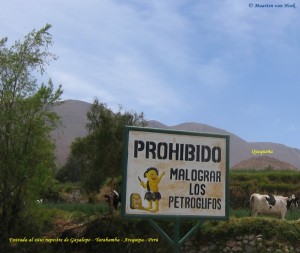
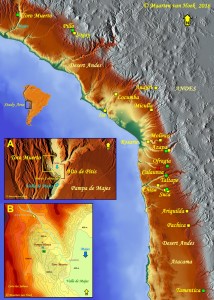
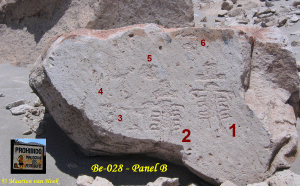
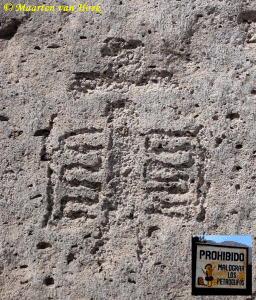
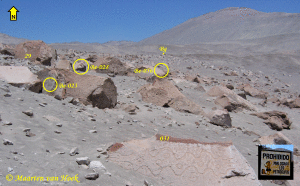
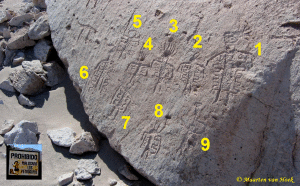
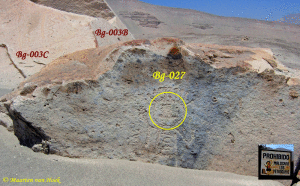
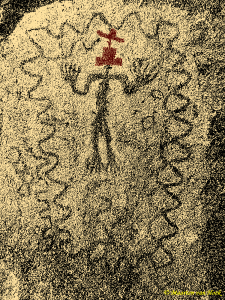
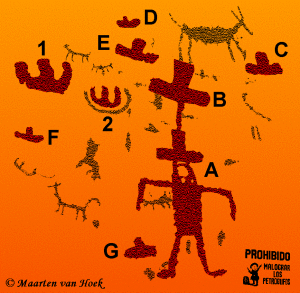
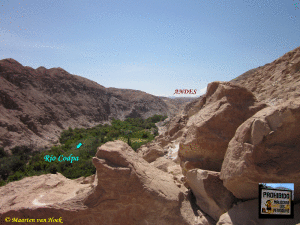
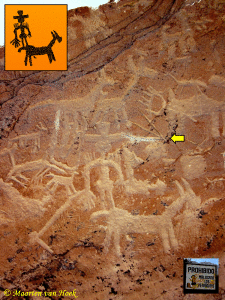
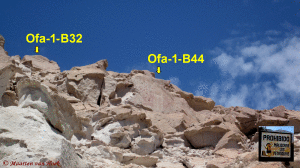
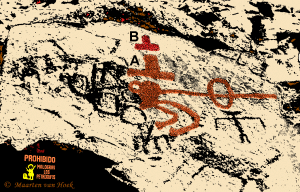
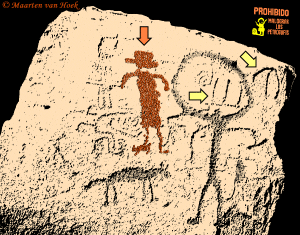
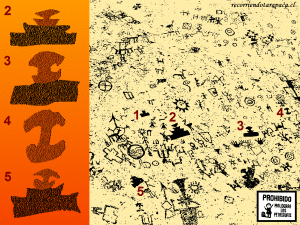
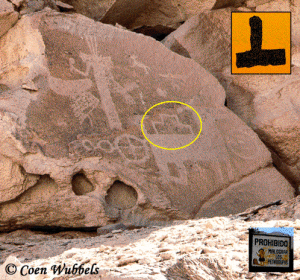
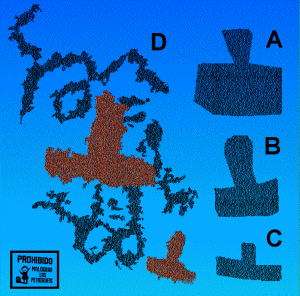
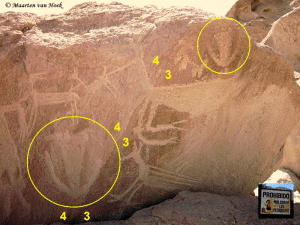
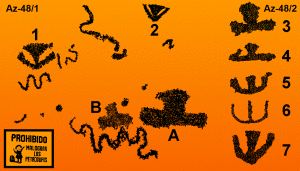

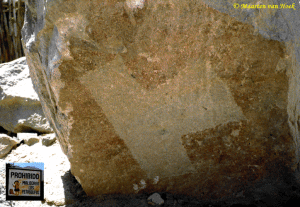
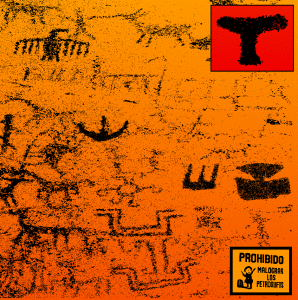
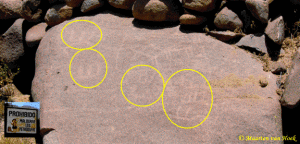
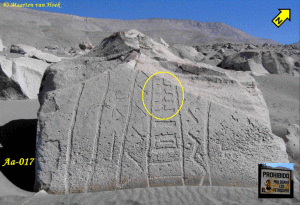
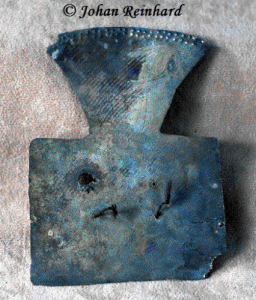
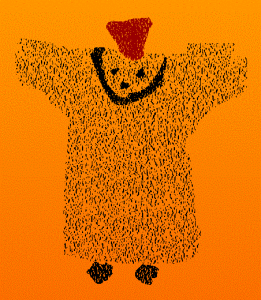
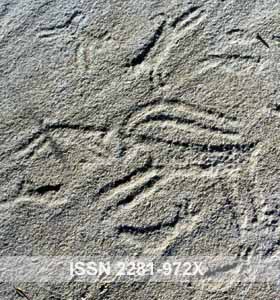













Leave a Reply